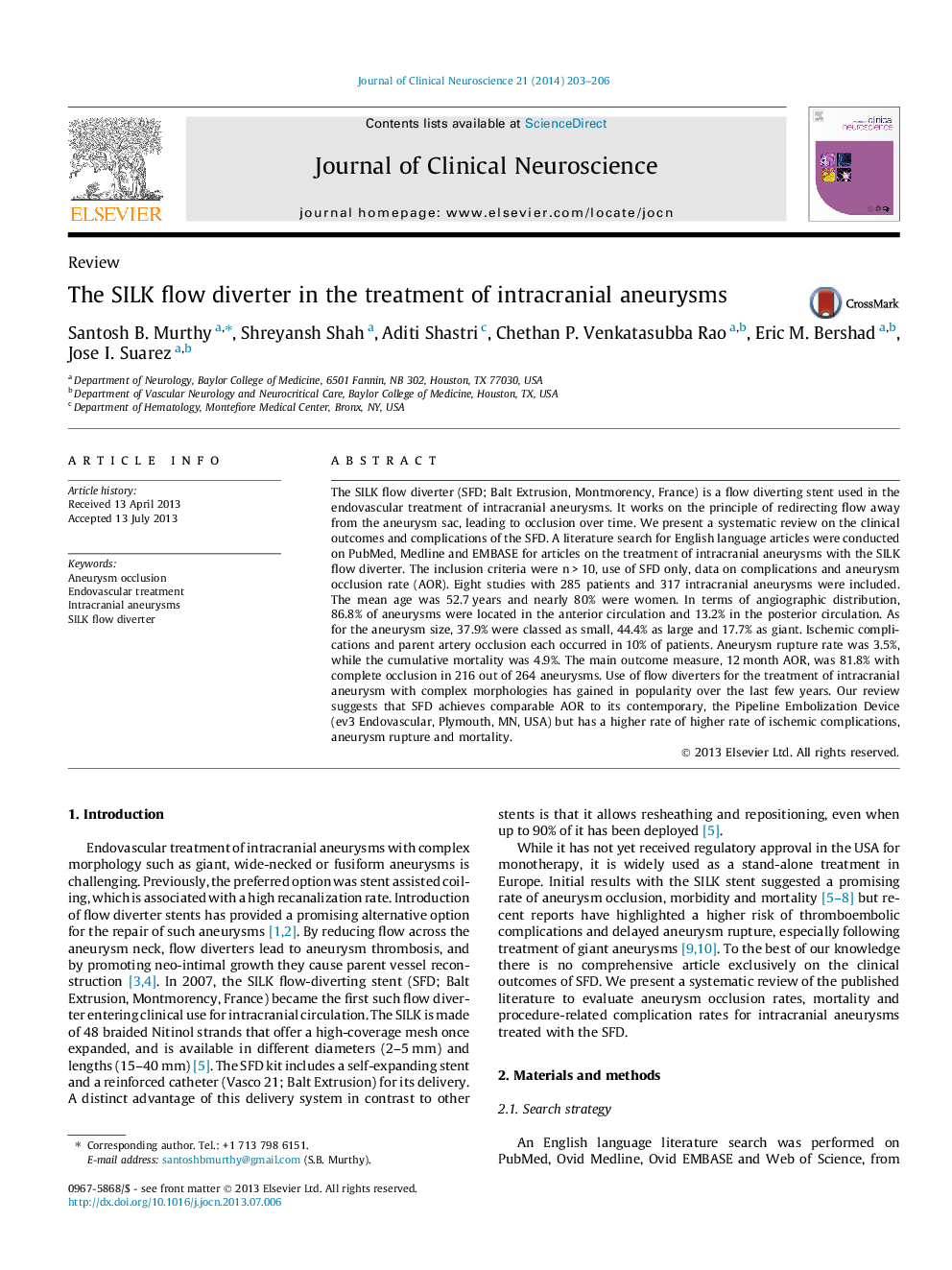| Article ID | Journal | Published Year | Pages | File Type |
|---|---|---|---|---|
| 3059221 | Journal of Clinical Neuroscience | 2014 | 4 Pages |
The SILK flow diverter (SFD; Balt Extrusion, Montmorency, France) is a flow diverting stent used in the endovascular treatment of intracranial aneurysms. It works on the principle of redirecting flow away from the aneurysm sac, leading to occlusion over time. We present a systematic review on the clinical outcomes and complications of the SFD. A literature search for English language articles were conducted on PubMed, Medline and EMBASE for articles on the treatment of intracranial aneurysms with the SILK flow diverter. The inclusion criteria were n > 10, use of SFD only, data on complications and aneurysm occlusion rate (AOR). Eight studies with 285 patients and 317 intracranial aneurysms were included. The mean age was 52.7 years and nearly 80% were women. In terms of angiographic distribution, 86.8% of aneurysms were located in the anterior circulation and 13.2% in the posterior circulation. As for the aneurysm size, 37.9% were classed as small, 44.4% as large and 17.7% as giant. Ischemic complications and parent artery occlusion each occurred in 10% of patients. Aneurysm rupture rate was 3.5%, while the cumulative mortality was 4.9%. The main outcome measure, 12 month AOR, was 81.8% with complete occlusion in 216 out of 264 aneurysms. Use of flow diverters for the treatment of intracranial aneurysm with complex morphologies has gained in popularity over the last few years. Our review suggests that SFD achieves comparable AOR to its contemporary, the Pipeline Embolization Device (ev3 Endovascular, Plymouth, MN, USA) but has a higher rate of higher rate of ischemic complications, aneurysm rupture and mortality.
